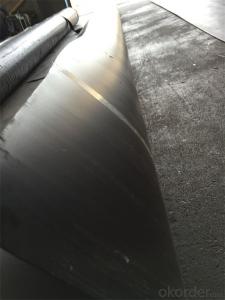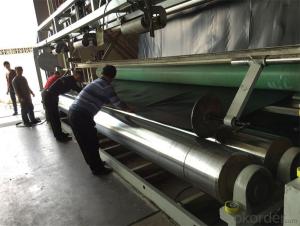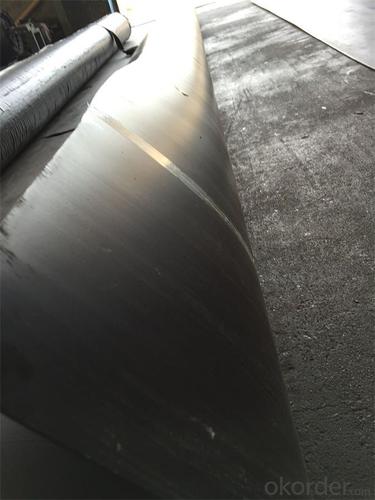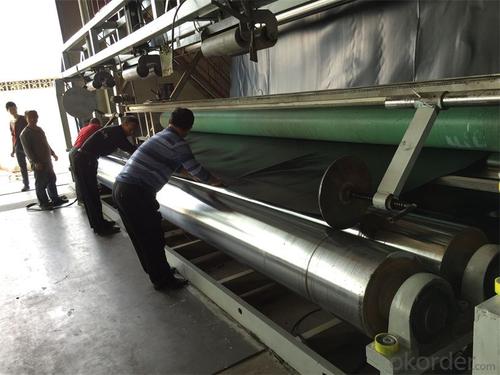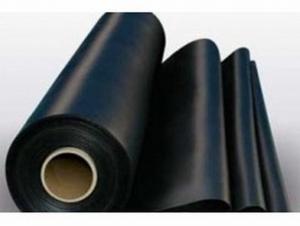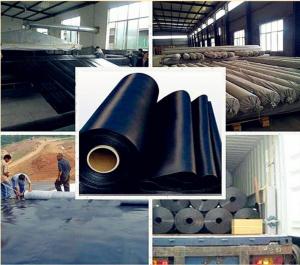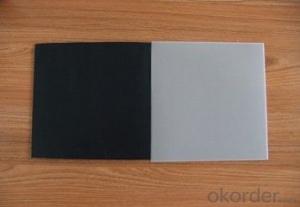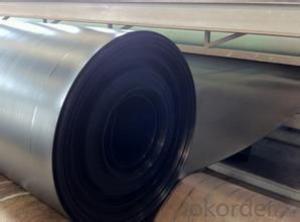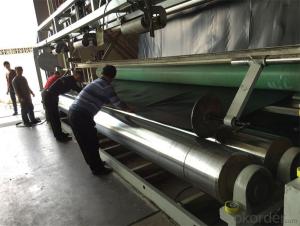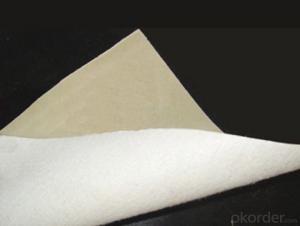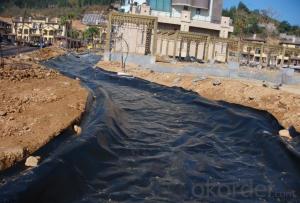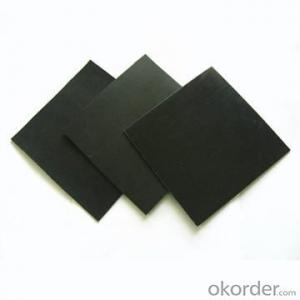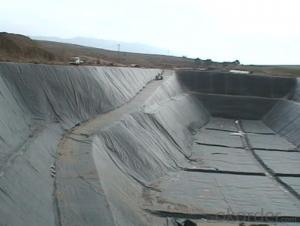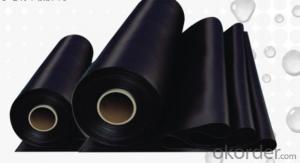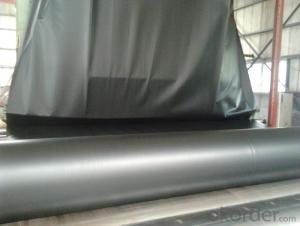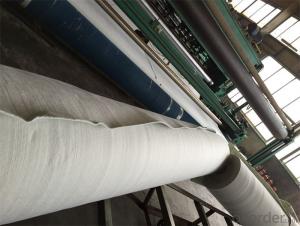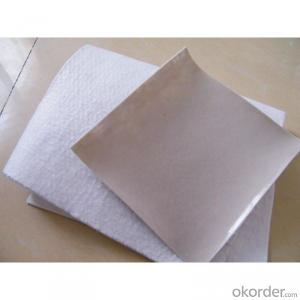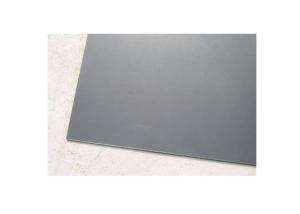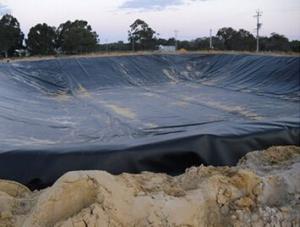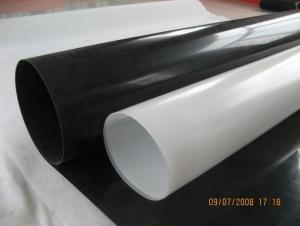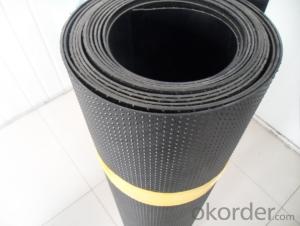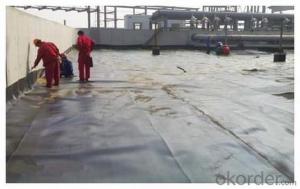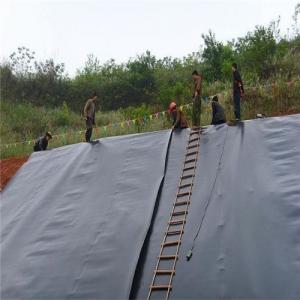Gm13 HDPE Geomembrane Black or White for Pond
- Loading Port:
- Qingdao
- Payment Terms:
- TT OR LC
- Min Order Qty:
- 5000 m²
- Supply Capability:
- 2000000 m²/month
OKorder Service Pledge
OKorder Financial Service
You Might Also Like
Description
HDPE geomembrane are made from High density polyethylene polymer by bolw film process .
Have Smooth surface , Textured surface , Anti-Skid suface
HDPE Geomembrane Main Function
Antiseepage and seperation
Geomembrane Property
1. Good flexibility
2. For service temperature range : -70℃ ~ +110℃
3. Corrosion resistance , aging resistance
4. Excellent environmental stress cracking resistance property
5. High tensile strength and elongation
HDPE Geomembrane Usage
Landfills , sewage or waste treatment seeage .
River bank , lake dam , dam , water dam and reservoir, channel , has liquid pool ( pit , mine )
Metro , basements and tunnels , tunnel seepage control lining Foundation and other foundation saline seepage
Embankment , upstream impervious blanket level , foundation vertical impermeable layer , cofferdam construction , waste disposal
Sea water , fresh water fish farm
Road , highway , railway foundation expansive soil and loess of the waterproof layer
Roof impervious
HDPE Geomembrane Specification
No. | Item | Test Value | |||||||||
0.75mm | 1.0 mm | 1.25 mm | 1.5 mm | 2.0 mm | 2.5 mm | 3.0mm | |||||
1 | Minimum Density(g/cm³) | 0.939 | |||||||||
2 | Tensile Property | ||||||||||
Yield Strength ,N/mm | 11 | 15 | 18 | 22 | 29 | 37 | 44 | ||||
Break Strength ,N/mm | 20 | 27 | 33 | 40 | 53 | 67 | 80 | ||||
Yield Elongation ,% | 12 | ||||||||||
Break Elongation ,% | 700 | ||||||||||
3 | Tear Resistance N | 93 | 125 | 156 | 187 | 249 | 311 | 374 | |||
4 | Puncture Resistance N | 240 | 320 | 400 | 480 | 640 | 800 | 960 | |||
5 | Stress Crack Resistance, hrs | 300 | |||||||||
6
| Carbon Black | ||||||||||
Carbon Black Content, % | 2.0-3.0 | ||||||||||
Carbon Black Dispersion | Carbon black dispersion(only near spherical agglomerates) for 10 different views 9 in categories 1 or 2 and 1 in category 3 | ||||||||||
7
| Oxidative induction time(OIT) | ||||||||||
Standard OTI Min | 100 | ||||||||||
High Pressure OTI Min | 400 | ||||||||||
8 | Oven aging at 85℃ | ||||||||||
Standard OIT-% retained after 90 days | 55 | ||||||||||
High pressure OIT-% retained after 90 days | 80 | ||||||||||
9 | UV Resistance | ||||||||||
Standard OIT retained after 1600 hrs | 50 | ||||||||||
High pressure OIT retained after 1600 hrs | 50 | ||||||||||
10 | Low tempreture impact brittle property at -70°C | Pass | |||||||||
11 | Water vapor permeability (g.cm/cm2 .s.Pa) | ≤1.0×10-13 | |||||||||
12 | Dimensional Stability (%) | ±2 | |||||||||
Gemembrane Show:
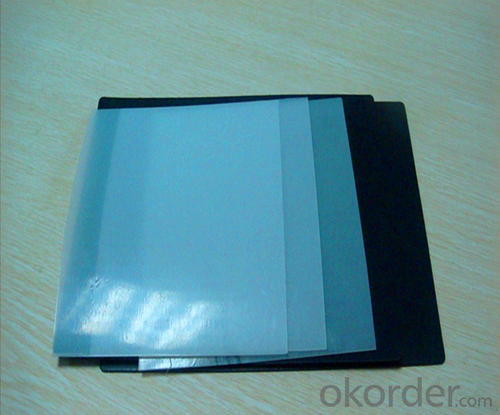
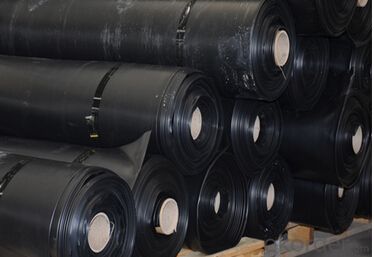
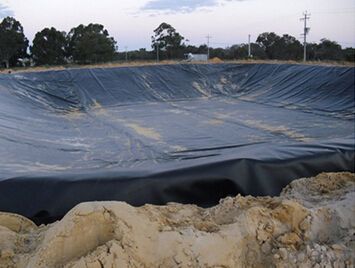
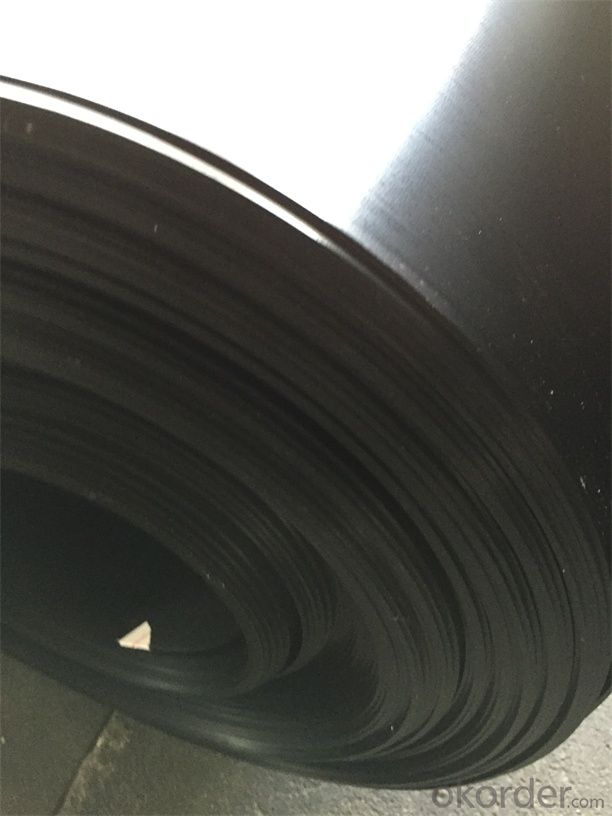
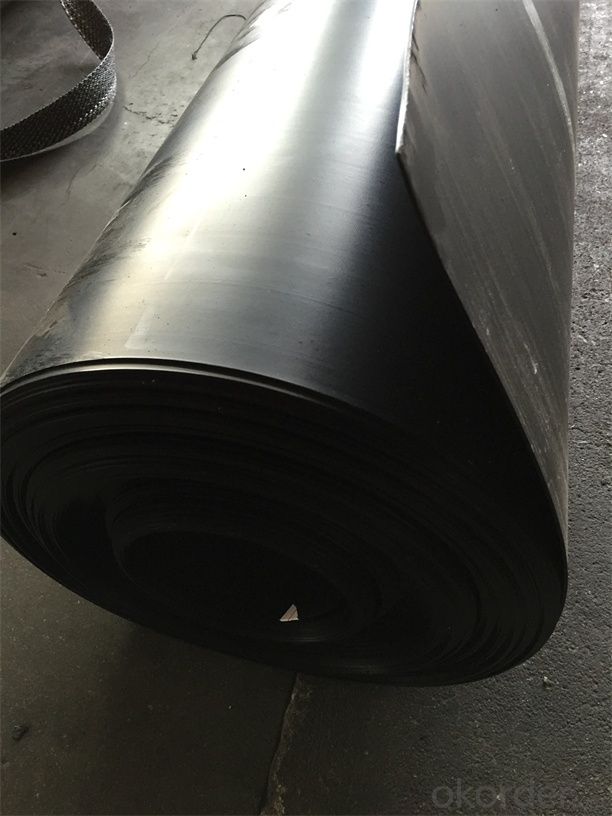
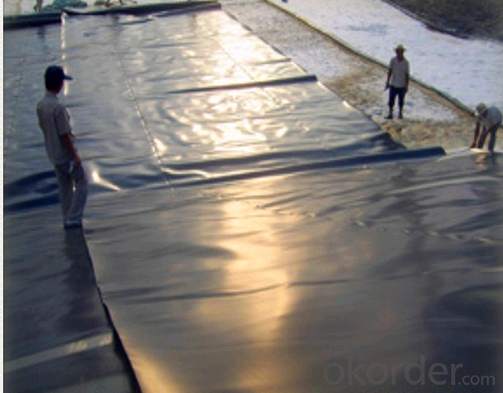
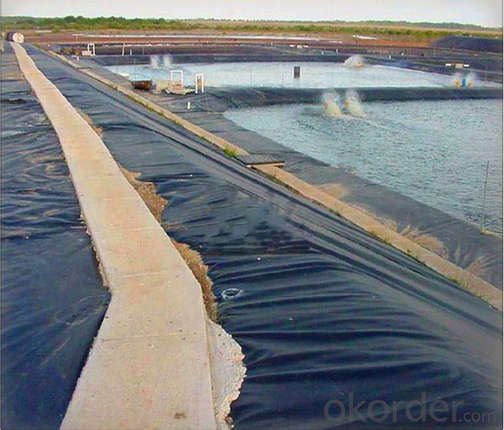
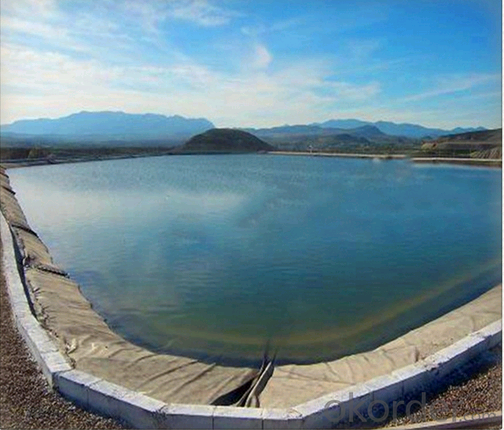
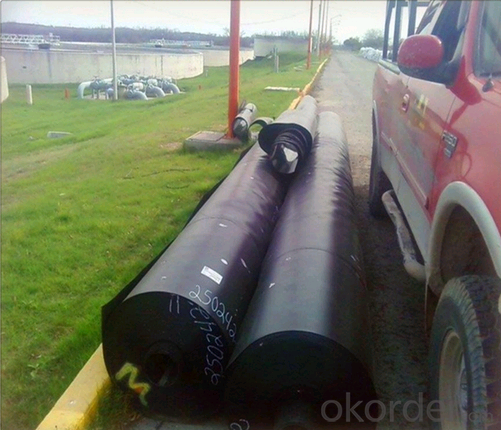
FAQ:
- Q1: Can you provide a sample for us?
A:Yes,We can send free samples,but customer need to pay the freight.
HDPE Geomembrane Price
- Q2: What is your minimum order quantity?
A:The minimum order quantity is 5000 ,but it is negotiable.
HDPE Geomembrane Price
- Q3:What is your payment terms?
A: T/T,Western Union,Paypal,L/C...
HDPE Geomembrane Price
- Q4:What is your delivery time?
A:Production time usually costs 2-20 days.
- Q: Can geomembranes be used in transportation infrastructure?
- Yes, geomembranes can be used in transportation infrastructure. They are often employed in applications such as road and railway embankments, bridge abutments, and retaining walls to provide erosion control, slope stabilization, and moisture barrier functions. Additionally, geomembranes can be used in the construction of tunnels and culverts to prevent water infiltration and protect the structure from corrosion.
- Q: Does the geomembrane be used as an experiment?
- Of course, the standard is GB / T-2008 "geosynthetics non-woven composite geomembrane" revision. This standard specifies the nonwovens composite geomembrane product classification, specifications, code, technical requirements and quality assessment, test methods, inspection rules, packaging, signs, storage and transportation. This standard applies to non-woven geotextile as the substrate, with polyethylene, polyvinyl chloride and other films, composite non-woven composite geomembrane. This standard is the GB / T-1998 made the following technical changes: - standard name changed to "geosynthetics non-woven composite geomembrane"; - product specifications from the unit area of ??the quality to nominal breaking strength; - the product code is simplified from 7 parts to 5 parts; - the original standard in Table 1 and Table 2 for integration, fracture strength, tear strength, CBR burst strength indicators are specified specific indicators, and increase the file requirements ; - the elongation at break is changed to the standard strength corresponding to the elongation; - the width is changed to the reference index, the mass per unit area is no longer used as the assessment index; - simplifies the appearance inspection; - simplifies the packaging, standard.
- Q: What are the key properties of a high-quality geomembrane?
- The key properties of a high-quality geomembrane include durability, flexibility, chemical resistance, and impermeability.
- Q: How do geomembranes handle soil erosion?
- Geomembranes are used as a barrier to prevent soil erosion by providing a durable and impermeable layer. They are designed to withstand the erosive forces of water, wind, and other environmental factors, thereby protecting the soil beneath from being washed away or displaced. Additionally, geomembranes can be anchored or secured in place to further enhance their effectiveness in preventing soil erosion.
- Q: How do geomembranes contribute to oil and gas containment?
- Geomembranes contribute to oil and gas containment by providing an impermeable barrier that prevents the seepage or leakage of these substances into the surrounding environment. They act as liners or covers for containment structures such as storage tanks, ponds, or landfills, ensuring that oil and gas remain safely contained and do not contaminate soil, groundwater, or nearby water bodies. Geomembranes also offer resistance against chemical degradation, UV exposure, and mechanical damage, thereby enhancing the overall integrity and longevity of oil and gas containment systems.
- Q: What are the standards of PE seepage-proof geomembranes?
- Geomembranes is a kind of waterproof barrier membrane with high-molecular polymers as basic materials which can be divided into: Polyethylene (PE) products: Two cloths film one film(protective geotextiles are sticked to both sides of seepage-proof membranes) one cloth and one membrane(seepage-proof membranes)
- Q: How do geomembranes handle wave action?
- Geomembranes are designed to handle wave action by providing a durable and impermeable barrier between water bodies and their surroundings. They have high tensile strength and flexibility, allowing them to withstand the dynamic forces exerted by waves. Additionally, the smooth surface of geomembranes reduces the potential for wave-induced erosion, ensuring the stability and integrity of the structure.
- Q: Waterproof geomembrane convergence is not good, the joints touch the top of the cement is necessary?
- It's useless! Cement is water permeable! Geomembrane manufacturers to answer!
- Q: What is the role of geomembranes in landfill gas management?
- Geomembranes play a crucial role in landfill gas management by acting as a barrier to prevent the escape of harmful gases, such as methane, from landfill sites. These impermeable liners are placed beneath the waste to prevent gas migration into the surrounding environment and groundwater. Geomembranes also help collect and control the gas, allowing for its safe extraction and utilization as an energy source, reducing greenhouse gas emissions and minimizing potential risks to human health and the environment.
- Q: How do geomembranes provide water retention in green roof systems?
- Geomembranes provide water retention in green roof systems by acting as a barrier that prevents water from draining off the roof surface. Instead, the geomembrane holds the water in place, allowing the vegetation and soil on the green roof to absorb and retain it. This helps to reduce stormwater runoff, promote plant growth, and provide a sustainable water source for the green roof ecosystem.
Send your message to us
Gm13 HDPE Geomembrane Black or White for Pond
- Loading Port:
- Qingdao
- Payment Terms:
- TT OR LC
- Min Order Qty:
- 5000 m²
- Supply Capability:
- 2000000 m²/month
OKorder Service Pledge
OKorder Financial Service
Similar products
Hot products
Hot Searches
Related keywords
